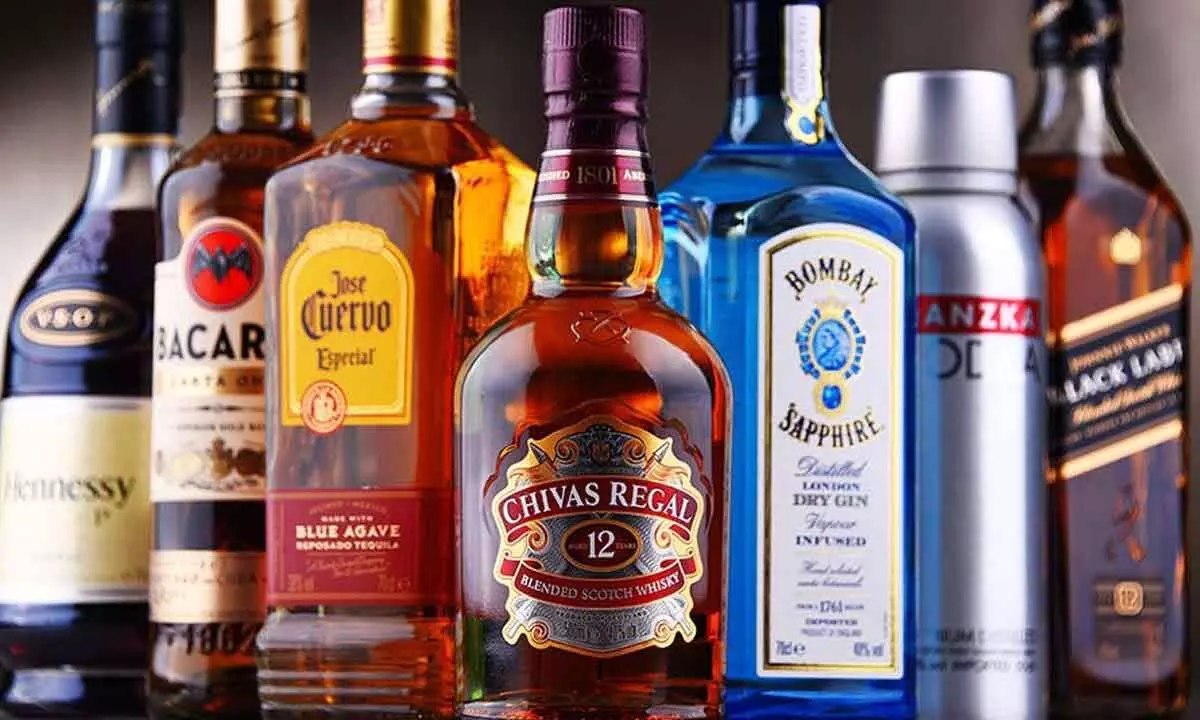The alcobev industry remains India’s pivotal economic growth engine
It is set to maintain a healthy revenue growth of 8-10% in FY2024
image for illustrative purpose

The industry accounts for a significant 24.6% of the states' total own tax receipts. The Indian alcohol industry is grappling with shrinking margins, thanks to the rising cost of raw materials used to produce alcohol, while state governments are keeping the MRP constant
The alcobev industry has been long considered to be a recession-free industry. The pandemic disrupted the industry but it bounced back by manufacturing sanitizers earning brownie points and E-commerce that helped to keep the cash registers ringing.
An ISWAI report has predicted that by 2030, India's AlcoBev sector will reach $ 64 billion by 2031.
According to a report by the International Spirits & Wines Association of India (ISWAI), India's alcoholic beverage market is predicted to reach $ 64 billion over the next five years, ensuring India's ranking as the fifth-largest contributor to global market revenues in the near to medium term.
The Indian alcoholic beverages (alcobev) industry has always held a dynamic position in the country’s vast consumer market. Given its unique socio-cultural and economic aspects, the sector often experiences rapid swings in its growth trajectory.
According to a recent report by the Investment Information and Credit Rating Agency (ICRA), the industry is set to maintain a healthy revenue growth of 8-10% in the fiscal year 2024 (FY2024). However, there is also a warning of a potential margin contraction. Let’s delve into the specifics of this forecast. The Indian middle class, with its increasing disposable income, continues to be a significant driver for growth in the alcobev sector. As global tastes and aspirations develop, there’s a marked shift towards premium brands and products, leading to higher revenue generation.
Revenues for ICRA’s sample set firms increased YoY by 20% in FY2023 to Rs. 26 billion, surpassing pre-COVID levels. Despite being the lean season for the segment, the spirits business recorded a 13% YoY growth in revenues during Q1FY2024; whereas, the beer industry, which was in its peak season, had a minor drop of 1% because of the unseasonal rain.
Urban centers in India are witnessing a gradual acceptance of social drinking, especially among the younger generation. This cultural evolution is propelling the demand for various alcoholic products.
Companies are focusing on expanding their product portfolios, introducing a range of flavored alcoholic beverages, ready-to-drink cocktails, and craft spirits. This diversification caters to a broader audience and drives volume growth.
The alcobev sector in India is heavily regulated, with each state having its own set of rules and tax structures. Frequent policy changes, unpredictable excise hikes, and differential state policies can strain industry margins.
As more players enter the market, both domestic and international, there is aggressive competition, leading brands to offer discounts and promotional offers. These strategies, while essential for
Inefficient supply chain management, bottlenecks in distribution, and storage issues can add to the operational costs of companies in this industry.
Focus on niche products and segments, targeting specific consumer groups, which can command higher price points and offer better margins. Investing in technology and modern supply chain practices can streamline operations and control costs.
While the revenue growth prediction for the Indian alcobev industry in FY2024 is optimistic, companies need to be cognizant of the challenges ahead.
According to ISWAI, the industry contributed to the state governments a substantial Rs. 2.4 lakh crore ($ 29 billion) in indirect taxes in the fiscal year 2021, representing many income sources. Customs duties on alcoholic beverages by themselves brought in Rs. 2,400 crore. The alcohol industry's revenues account for 1.7% of India's nominal GDP, 7.7% of all taxes collected and 11.7% of indirect tax income in the country. According to the statement, the industry accounts for a significant 24.6% of the states' total own tax receipts.
The Indian alcohol industry is grappling with shrinking margins, thanks to the rising cost of raw materials used to produce alcohol, while the state governments are keeping the maximum retail price (MRP) constant. The raw materials for manufacturing alcohol include extra neutral alcohol (ENA), glass, labels, closures, paper packaging, and miscellaneous materials.
While ENA witnessed a price increase of 53 per cent between 2018 and 2023, glass prices increased by around 79 per cent, label prices rose by 29 per cent, closures’ prices increased by 22 per cent, and the cost of paper packaging moved up by 31 per cent during the same period. “This is a significant moment for ISWAI and the broader industry, affirming the sector’s substantial relevance to the nation. The AlcoBev Industry serves as a pivotal economic engine, making it imperative for pertinent stakeholders to recognise and value our sector’s economic contributions,” the report points out.
There are an astounding 79 lakh people employed by the alcohol sector, both directly and indirectly. This represents 1.5% of all the labour force that is employed in the nation.

